Application of a Non-Immersive VR, IoT Based Approach to Help Moroccan Students Carry Out Practical Activities in a Personal Learning Style
Abstract
:1. Introduction
- Perform tasks safely;
- Participate in learning situations that require repetition easily;
- Participate in learning situations that are too expensive to implement in reality.
2. Background
3. Internet of Things
- Smart home: With the increasing demand for human comfort and safety, many appliances and equipment have come into our households to ensure our wellbeing and comfort. There is a possibility to make our lives more comfortable, more convenient, and much easier: this is achieved through the management of all those appliances. Yet, managing them is a challenge. To surpass this problem, many proposals and solutions based on IoT have been given [10,11,12].
- Transportation: Several contributions have been suggested based on IoT that aim basically at transforming the transportation systems. The Internet of Things (IoT) is basically transforming the transportation systems: transportation-based IoT systems will optimize the traffic and allow tracking, delivering of merchandise, improving economics, public safety, and the environment [13].
- Environment: IoT can be used to track the variation of some environmental parameters such as temperature, humidity, and light level. The main goal of this task is to define the quality of the surrounding environment in which we are living [14].
- Healthcare: Healthcare represents a field in which IoT can be wildly applied. Medical devices can be considered as smart objects. Healthcare services based on IoT can play a major role in reducing costs, increasing the quality of life, and keeping patients safe and healthy [15].
4. Virtual Reality
- Simulations of a real environment for training or educational purposes.
- Imagined environments for entertainment purposes: games or interactive stories.
5. Related Works
5.1. IoT and VR in Education
5.2. IoT in Education
5.3. Virtual Reality in Education
6. Proposal
6.1. Working System
- Android app: This is an Android application used by the learner. The main role of this application is QR code reading, 3D object display, and communication with other system components.
- Web app: This web application is reserved for the teacher. Through this application, the teacher can create a pedagogical scenario to lead the learner to achieve the learning objectives. The web app typically includes the HTML, CSS, and JavaScript that creates pages, menus, buttons, and everything else that forms the basis of what the teacher sees in his/her web browser.
- Databases: The proposed architecture uses two databases, one that contains 3D objects and the other that contains the learner’s profiles. This second database is used by the teacher to generate tailored pedagogical scenarios.
- Back-end sever: The back-end server allows the communication between all the components above. Its main role is to verify information via the back-end databases, and the relevant information is then presented to the user (learner/teacher). It is built using Java EE, Java, and Spring codes.
- Set the generator in the “salve mode” and the oscilloscope in scanning mode;
- Set the oscilloscope to get one or two bursts on each input;
- Determine the time difference between the beginnings of two bursts;
- Measure the distance d;
- For the measurement to be sufficiently accurate, it is necessary to repeat Step 3 with different values of the distance d.
- Use the relationship: to measure the ultrasonic velocity in air.
- Learning objectives: It is basically a text file that describes the predetermined skills and knowledge to be achieved by learners that accomplish the pedagogical scenario.
- Prerequisites: These are skills and knowledge necessary for a learner so he/she can start an educational activity correctly.
- Roles: they describe roles of everyone involved in an educational activity.
- Activities: They consist of describing educational activities (the basic component of the pedagogical scenario) performed in the environment by the learner.
- Resources: These are the resources necessary to accomplish a learning session perfectly (audio file, images, etc.). These kinds of resources can be used, as well as a tool to guide (assistant) a learner in case he/she cannot finish a task after several attempts.
- Environment: It describes the context of the execution of the learning activity, and it contains additional resources necessary for the execution of the activities. In our case, it is the virtual environment for training.
6.2. Security and Privacy
7. Results
8. Conclusions
Author Contributions
Conflicts of Interest
References
- Jayavardhana, G.; Rajkumar, B.; Slaven, M.; Marimuthu, P. Internet of Things (IoT): A vision, architectural elements, and future directions. Future Gen. Comput. Syst. 2013, 29, 1645–1660. [Google Scholar] [CrossRef] [Green Version]
- Gushima, K.; Nakajima, T. A Design Space for Virtuality-Introduced Internet of Things. Future Internet 2017, 9, 60. [Google Scholar] [CrossRef]
- Fuchs, P.; Moreau, G. Le traité de la réalité virtuelle. In Science Mathématiques et Informatique; Presses de l’Ecole des Mines, Ed.; Publishing House: Paris, France, 2003; ISBN 978-2911762475. [Google Scholar]
- Chee-Kit, L.; Peter, S.; BaoHui, Z.; Hyo-Jeong, S.; Wenli, C.; Lung-Hsiang, W. Leveraging mobile technology for sustainable seamless learning: A research agenda. Br. J. Educ. Technol. 2010, 41, 154–169. [Google Scholar] [CrossRef]
- Zhu, Z.-T.; Yu, M.-H.; Riezebos, P. A research framework of smart education. Smart Learn. Environ. 2016, 3, 1–17. [Google Scholar] [CrossRef]
- John, D. Making sense of MOOCs: Musings in a maze of myth, paradox and possibility. J. Interact. Media Educ. 2012, 3, 1–20. [Google Scholar] [CrossRef]
- Idros, S.N.S.; Mohamed, A.R.; Esa, N.; Samsudin, M.A.; Daud, K.A.M. Enhancing self-directed learning skills through e-SOLMS for Malaysian learners. Procedia-Soc. Behav. Sci. 2010, 2, 698–706. [Google Scholar] [CrossRef] [Green Version]
- Minami, M.; Morikawa, H.; Aoyama, T. The design of naming-based service composition system for ubiquitous computing applications. In Proceedings of the Symposium on Applications and the Internet-Workshops, Tokyo, Japan, 26–30 January 2004; pp. 304–312. [Google Scholar] [CrossRef]
- Margaret, T.A.H. Promises and threats: iN2015 Masterplan to pervasive compting in Singapore. Technol. Soc. 2012, 17, 37–56. [Google Scholar] [CrossRef]
- Rui, L.; Yongqi, G. Smart Home System Design Based on Internet of Things. In Proceedings of the 12th International Conference on Computer Science & Education, Houston, TX, USA, 22–25 August 2017; pp. 444–448. [Google Scholar] [CrossRef]
- Himanshu, V.; Madhu, J.; Khushhali, G.; Adityan, V.; Gaurav, V. Smart home system based on Internet of Things. In Proceedings of the 3rd International Conference on Computing for Sustainable Global Development (INDIACom), New Delhi, India, 16–18 March 2016. [Google Scholar]
- Mussab, A.; Zaidan, A.A.; Zaidan, B.B.; Mohammed, T.; Kiah, M.L.M. A Review of Smart Home Applications based on Internet of Things. J. Netw. Comput. Appl. 2017, 97, 48–65. [Google Scholar] [CrossRef]
- Thiyagarajan, M.B.; Umamaheswaran, R.K.; Viswanathan, M.B. An Internet of Things based Intelligent Transportation System. In Proceedings of the International Conference on Vehicular Electronics and Safety (ICVES), Hyderabad, India, 16–17 December 2014; pp. 174–179. [Google Scholar] [CrossRef]
- Bhoomika, K.N.; Deepa, C.; Rashmi, R.K.; Srinivasa, R. Internet of Things for Environmental Monitoring. In Proceedings of the 1st International Conference on Innovations in Computing & Networking (ICICN16), Bengaluru, India, 12–13 May 2016; pp. 497–501. [Google Scholar]
- Jorge, G.; Byron, O.; Emilio, Z. Patient Monitoring System Based on Internet of Things. In Proceedings of the 7th International Conference on Ambient Systems, Networks and Tech-nologies, Madrid, Spain, 25–26 May 2016; pp. 90–97. [Google Scholar] [CrossRef]
- Vaughan, N.; Dubey, V.N.; Wainwright, T.W.; Middleton, R.G. A review of virtual reality based training simulators for orthopaedicsurgery. Med. Eng. Phys. 2015, 38, 1–13. [Google Scholar] [CrossRef]
- Krijn, M.; Emmelkamp, P.M.G.; Olafsson, R.P.; Biemond, R. Virtual reality exposure therapy of anxiety disorders: A review. Clin. Psychol. Rev. 2004, 24, 259–281. [Google Scholar] [CrossRef] [PubMed]
- Rizzo, A.; Parsons, T.D.; Lange, B.; Kenny, P.; Buckwalter, J.G.; Rothbaum, B.; Difede, J.; Frazier, J.; Newman, B.; Williams, J.; et al. Virtual Reality Goes to War: A Brief Review of the Future of Military Behavioral Healthcare. J. Clin. Psychol. Med. Settings 2011, 18, 176–187. [Google Scholar] [CrossRef] [PubMed]
- Federica, P.; Nicola, T.; Luca, A.; Luciana, A.; Fabrizia, M. Developing effective virtual reality training for military forces and emergency operators: From technology to human factors. In Proceedings of the 14th International Conference on Modeling and Applied Simulation, Seattle, WA, USA, 14–16 April 2015; pp. 176–187. [Google Scholar]
- Nee, A.Y.C.; Ong, S.K. Virtual and Augmented Reality Applications in Manufacturing. IFAC Proc. Vol. 2013, 46, 15–26. [Google Scholar] [CrossRef] [Green Version]
- Seth, A.; Vance, J.M.; Oliver, J.H. Virtual reality for assembly methods prototyping: A review. Virtual Real. 2011, 15, 5–20. [Google Scholar] [CrossRef]
- Wu, J.-W.; Chou, D.-W.; Jiang, J.-R. The Virtual Environment of Things (VEoT): A Framework for Integrating Smart Things into Networked Virtual Environments. In Proceedings of the IEEE International Conference on Internet of Things (iThings), and IEEE Green Computing and Communications (GreenCom) and IEEE Cyber, Physical and Social Computing (CPSCom), Taipei, Taiwan, 1–3 September 2014; pp. 456–459. [Google Scholar] [CrossRef]
- Huang, Y.; Ali, S.; Bi, X.; Zhai, X.; Liu, R.; Guo, F.; Yu, P. Research on Smart Campus Based on the Internet of Things and Virtual Reality. Int. J. Smart Home 2016, 10, 213–220. [Google Scholar] [CrossRef]
- Kodym, O. Creation of Virtual Reality Space Based on Internet of Things. In Proceedings of the 13th International Carpathian Control Conference (ICCC), High Tatras, Slovakia, 28–31 May 2012; pp. 296–299. [Google Scholar] [CrossRef]
- Cheng, T. Application and research of using the virtual reality technology to realize the remote control. Adv. Sci. Technol. Lett. 2013, 28, 1–4. [Google Scholar] [CrossRef]
- Ilic, A.; Fleisch, E. Augmented Reality and the Internet of Things; Auto-ID Labs White Paper, No. BIZAPP-068; Auto-ID Labs ETH/HSG: Zurich, Switzerland, 2016. [Google Scholar]
- Veeramanickam, M.R.M.; Mohanapriya, M. IoT enabled Futurus Smart Campus with effective E-Learning: I-Campus. GSTF J. Eng. Technol. 2016, 3, 81–87. [Google Scholar] [CrossRef]
- Jorge, G.; Juan, F.H.; Oscar, H.; Luis, P.; Daniela, G. Interaction System Based on Internet of Things as Support for Education. In Proceedings of the 4th International Conference on Emerging Ubiquitous Systems and Pervasive Networks, Niagara Falls, ON, Canada, 21–24 October 2013; pp. 132–139. [Google Scholar] [CrossRef]
- Wang, Y. English Interactive Teaching Model which based upon Internet of Things. In Proceedings of the International Conference on Computer Application and System Modeling, Taiyuan, China, 22–24 October 2010; pp. 587–590. [Google Scholar] [CrossRef]
- Jeannette, C.; Vic, C. Educational living labs: A novel internet-of-things based approach to teaching and research. In Proceedings of the 9th International Conference on Intelligent Environments, Athens, Greece, 16–17 July 2013; pp. 92–99. [Google Scholar] [CrossRef]
- Angelo, P.C.; Nicola, B.; Paolo, C.; Michele, R.; Zach, S.; Michele, Z. Architecture and Protocols for the Internet of Things: A Case Study. In Proceedings of the 8th IEEE International Conference on Pervasive Computing and Communications Workshops (PERCOM Workshops), Mannheim, Germany, 29 March–2 April 2010; pp. 678–683. [Google Scholar] [CrossRef]
- Majid, B.; Alberto, S.; Jeffrie, S.; Brayan, M. Internet of Things Simulation Tools: Proposing Educational Components. In Proceedings of the Ninth International Conference on Advances in System Simulation, Athens, Greece, 8–12 October 2017; pp. 57–63. [Google Scholar]
- Maryam, B.; Siavosh, H.M. The Effect of the Internet of Things (IoT) on Education Business Model. In Proceedings of the 12th International Conference on Signal-Image Technology & Internet-Based Systems, Naples, Italy, 28 November–1 December 2016; pp. 435–441. [Google Scholar] [CrossRef]
- Madhavi, V.; Sanjeev, W. An Architectural Approach of Internet of Things in E-Learning. In Proceedings of the International Conference on Communications and Signal Processing (ICCSP), Melmaruvathur, India, 2–4 April 2015; pp. 1773–1776. [Google Scholar] [CrossRef]
- Omar, S.; Yasser, A. Internet of Things-Based Free Learning System: Performance Evaluation and Communication Perspective. IETE J. Res. 2016, 63, 31–44. [Google Scholar] [CrossRef]
- Muriel, G.D.; Juan, A.M.F. Expanding the learning environment: Combining physicality and virtuality, The Internet of Things for e-Learning. In Proceedings of the 10th IEEE International Conference on Advanced Learning Technologies, Sousse, Tunisia, 5–7 July 2010; pp. 730–731. [Google Scholar] [CrossRef]
- Yuqiao, Y.; Kanhua, Y. Construction of Distance Education Classroom in Architec-ture Specialty Based on Internet of Things Technology. Int. J. Emerg. Technol. Learn. (iJET) 2016, 11, 56–61. [Google Scholar] [CrossRef]
- Zaid, A.; Tanupriya, C.; Subhash, C.G.; Gaurav, R. Internet of Things and its applications in E-learning. In Proceedings of the 3rd IEEE International Conference on Computational Intelligence and Communication Technology, Ghaziabad, India, 9–10 February 2017; pp. 1–5. [Google Scholar] [CrossRef]
- Putjorn, P.; Chee, S.A.; Deravi, F.; Narong, C. Exploring the Internet of “Educational Things” (IoET) in rural underprivileged areas. In Proceedings of the 12th International Conference on Electrical Engineering, Electronics, Computer, Telecommunications and Information Technology (ECTI-CON), Hua Hin, Thailand, 24–27 June 2015; pp. 1–5. [Google Scholar] [CrossRef]
- Zanella, A.; Bui, N.; Castellani, A.; Vangelista, L.; Zorzi, M. Internet of Things for Smart Cities. IEEE Internet Things J. 2012, 1, 22–32. [Google Scholar] [CrossRef]
- Liu, D.; Valdiviezo-Díaz, P.; Riofrio, G.; Sun, Y.-M.; Barba, R. Integration of Virtual Labs into Science E-learning. In Proceedings of the International Conference on Virtual and Augmented Reality in Education, Monterrey, Mexico, 19–21 November 2015; pp. 95–102. [Google Scholar] [CrossRef]
- Numan, A.; Sehat, U.; Aftab, A.; Jamal, R. Interactive Virtual Chemistry Laboratory for Simulation of High School Experiments. In Proceedings of the International Conference on Computer Graphics, Animation and Gaming Technologies, Ankara, Turkey, 14 October 2014. [Google Scholar]
- Dominic, M.; Margaret, W.; Timothy, J.M.; Craig, S.; Michael, W. Student experiences of virtual reality: A case study in learningspecial relativity. Am. J. Phys. 2016, 78, 862–868. [Google Scholar] [CrossRef]
- Elby, R.; Mahmoud, M.B.; Roy, G. The need for virtual reality simulators in dental education: A review. Saudi Dent. J. 2014, 29, 41–47. [Google Scholar] [CrossRef]
- Fahim, M.; Jakimi, A.; El Bermi, L. Towards New Approach to Enhance Learning Based on Internet of Things and Virtual Reality. In Proceedings of the International Conference on Learning and Optimization Algorithms: Theory and Applications, Rabat, Morocco, 2–5 May 2018. [Google Scholar] [CrossRef]
- Fahim, M.; Jakimi, A.; El Bermi, L. Pedagogical Scenarization for Virtual Environ-ments for Training: Towards Genericity, Coherence and Adaptivity. Int. J. Adv. Eng. Res. Sci. (IJAERS) 2016, 12, 96–103. [Google Scholar] [CrossRef]
- Al-Jumeily, D.; Williams, D.; Hussain, A.J.; Griffiths, P. Can We Truly Learn from A Cloud Or Is It Just A Lot of Thunder? Dev. E-Syst. Eng. 2010, 131–139. [Google Scholar] [CrossRef]
- Ibrahim, G.; Jibran, S.; Mohammad, H.; Hanan, F.; Vaclav, P.; Sardar, J.; Sohail, J.; Baker, T. Security threats to critical infrastructure: The human factor. J. Supercomput. 2018, 74, 4986–5002. [Google Scholar] [CrossRef]
- Ismaeel, A.R.; Yehia, K.; Moayad, A.; Burak, K. A probabilistic process learning approach for service composition in cloud networks. In Proceedings of the IEEE 30th Canadian Conference on Electrical and Computer Engineering (CCECE), Windsor, ON, Canada, 30 April–3 May 2017; pp. 1–6. [Google Scholar] [CrossRef]
- Thar, B.; Michael, M.; Martin, R.; Azzelarabe, T.B. Intention-oriented programming support for runtime adaptive autonomic cloud-based applications. Comput. Electr. Eng. 2013, 39, 2400–2412. [Google Scholar] [CrossRef] [Green Version]
- Yasir, K.; Thar, B.; Azzelerabe, T.B. Security Support for Intention Driven Elastic Cloud Computing. In Proceedings of the Sixth UKSim/AMSS European Symposium on Computer Modeling and Simulation, Valetta, Malta, 14–16 November 2012; pp. 67–73. [Google Scholar] [CrossRef]
- Hughes, G.; Al-Jumeily, D.; Hussain, A. Supporting Cloud Computing Management through an Object Mapping Declarative Language. Dev. E-Syst. Eng. 2010, 175–181. [Google Scholar] [CrossRef]
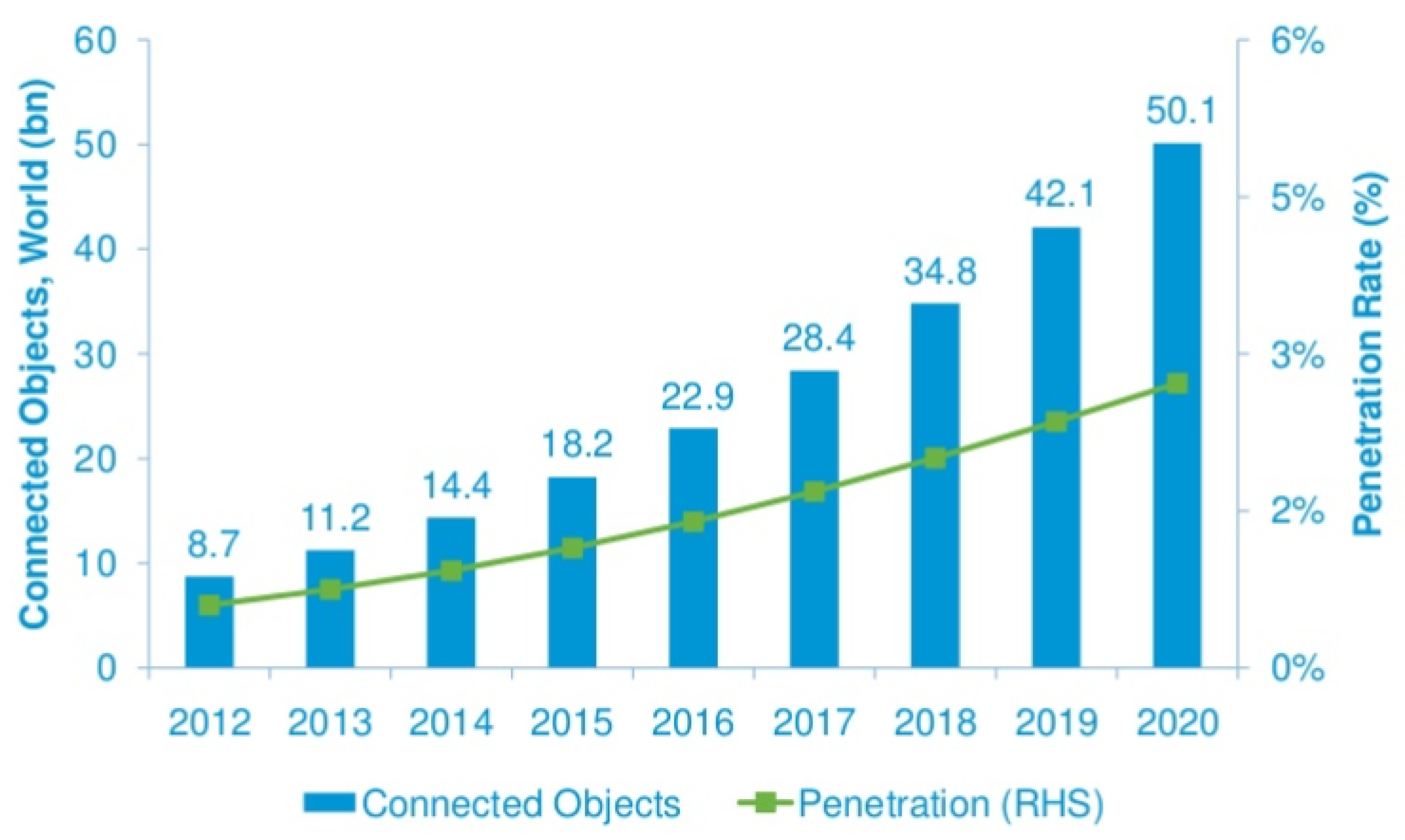
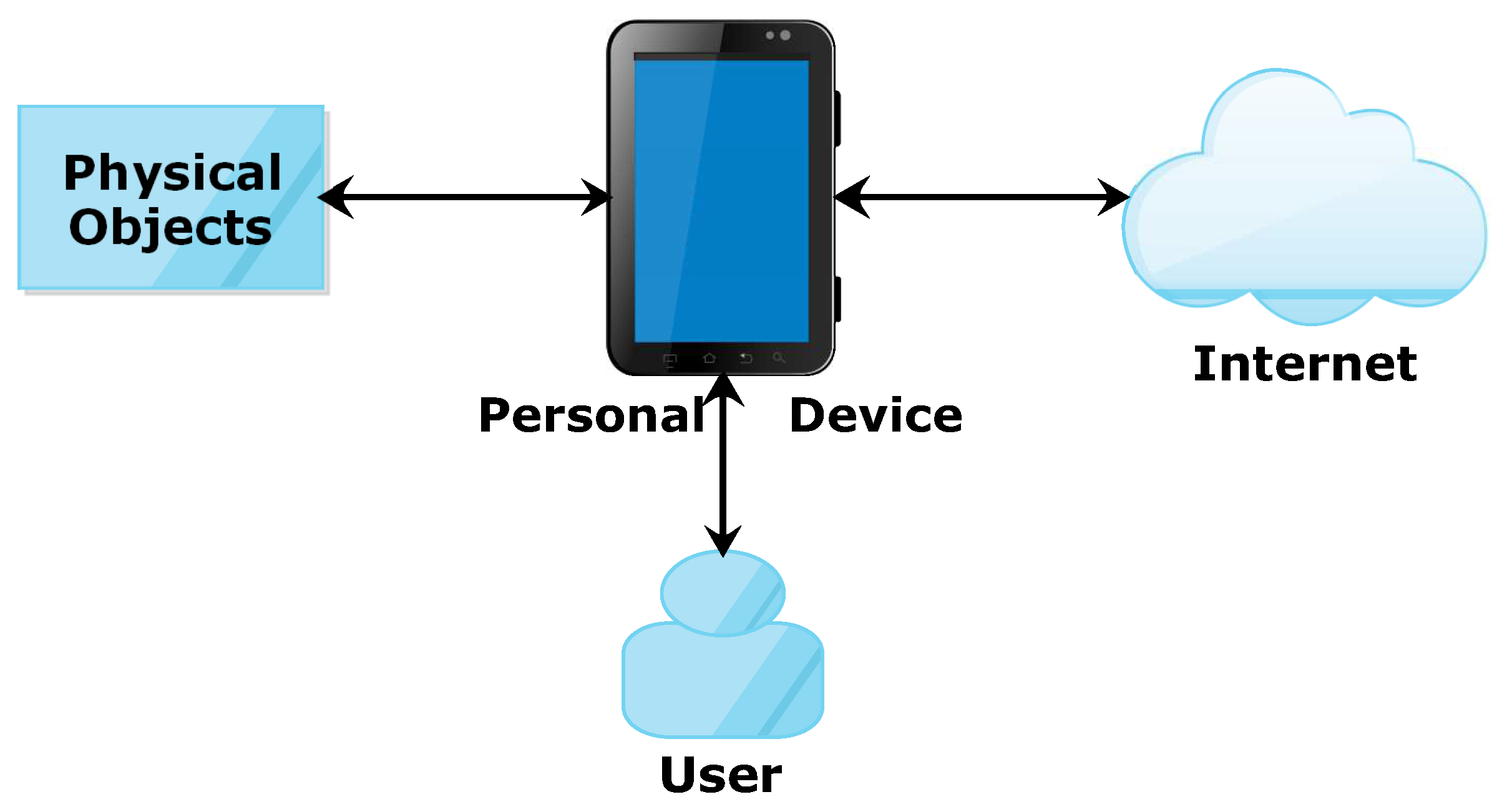
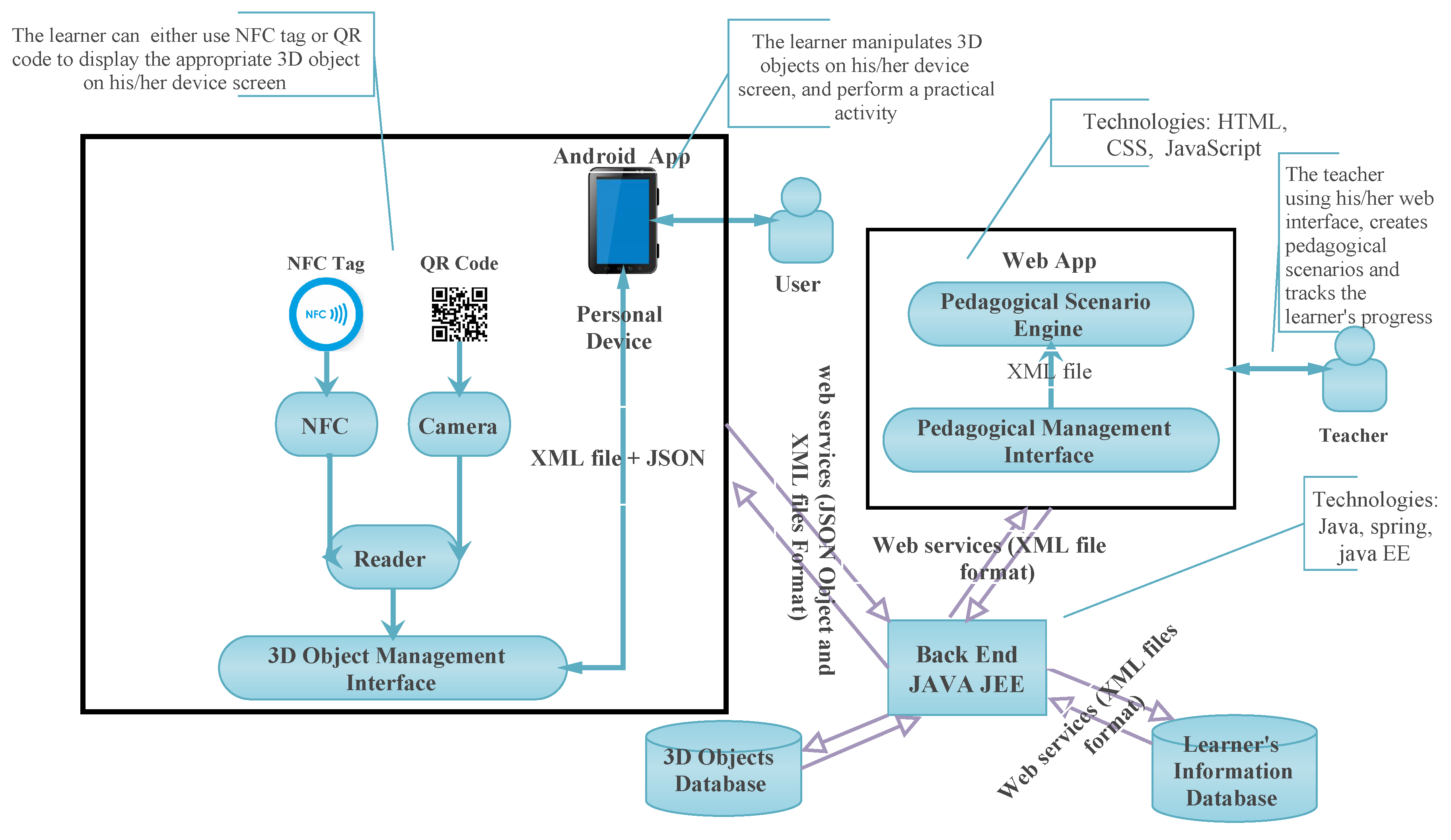
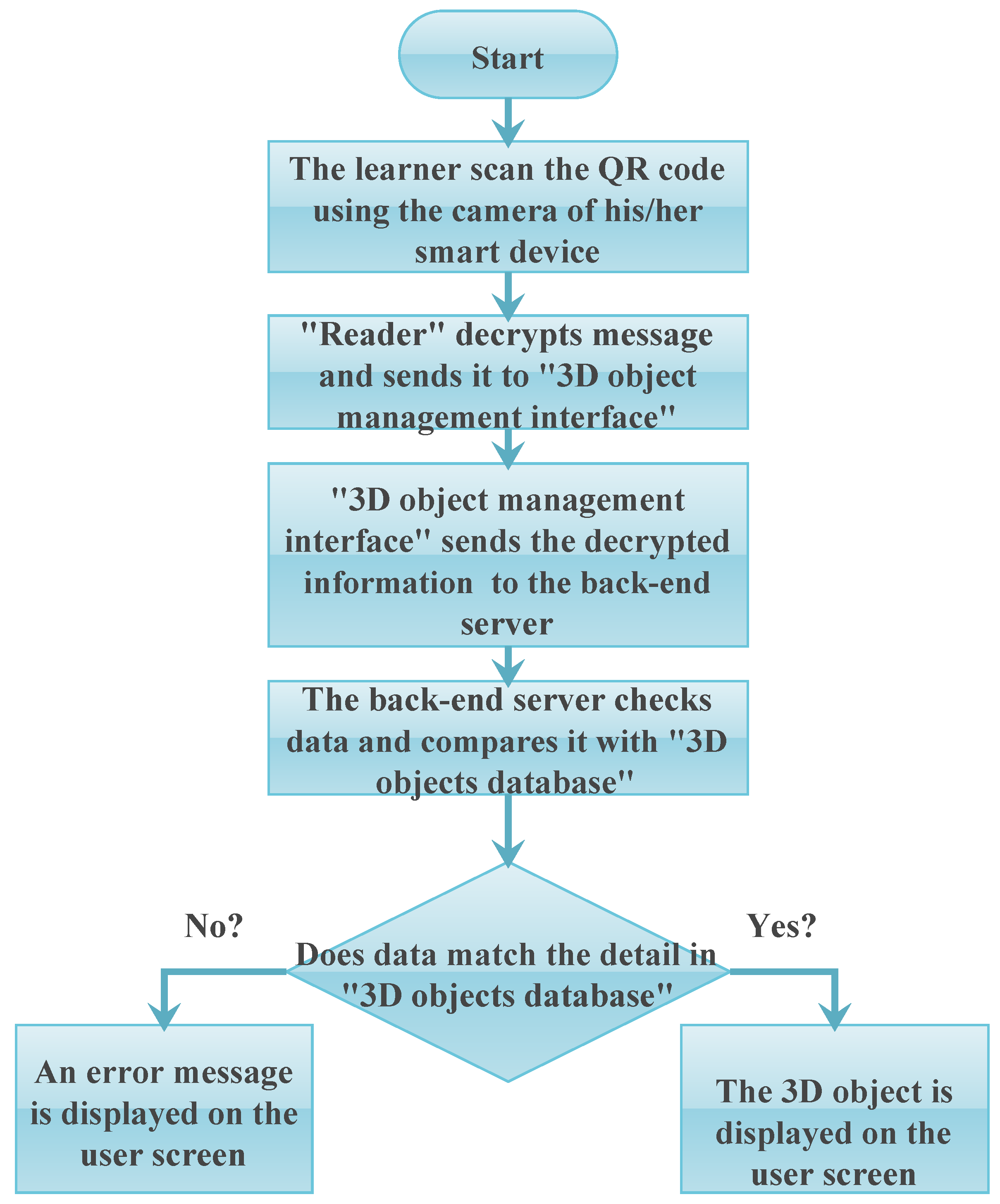

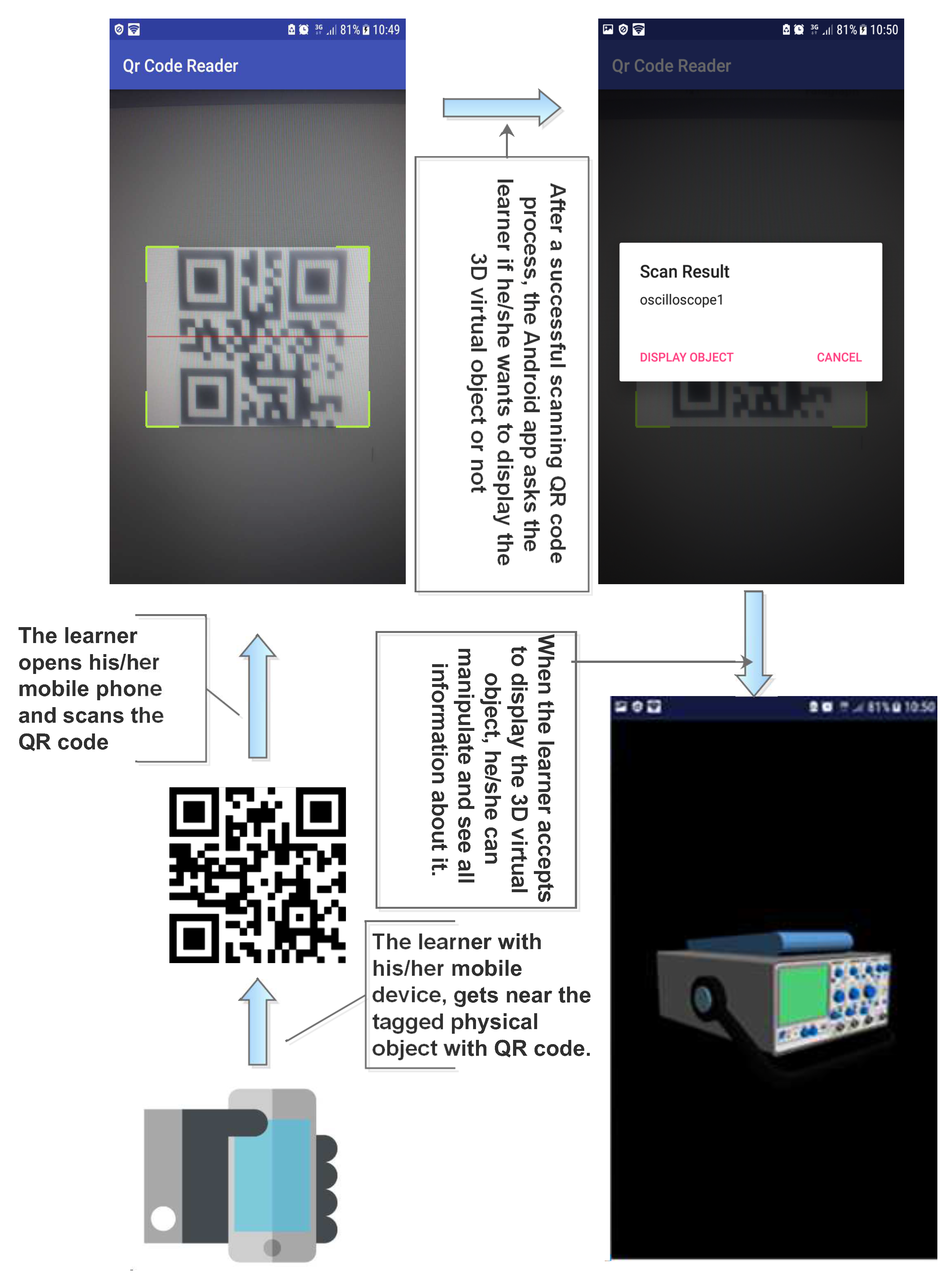
| <Pedagogical-scenario> |
| <Environments> |
| <Environment identifier = “85ds5sddfed56s4”> |
| <Title> Physics-PW </Title> |
| <class-model type = “XMI” url = “XML/PW-Environment1.world-model.xmi”/> |
| <virtual-environment type = “Mascaret” url = “PW-Environment1.world.xml”/> |
| ... |
| </Environment> |
| </Environments> |
| <Activities> |
| <Educational-Activities identifier=4d5fd45s16a6 isvisible = “true”> |
| <Title> Ultrasonic wave’s velocity</Title> |
| <environment-ref ref = “85ds5sddfed56s4/”> |
| <Participants id = ”6q9sq54s9” name = “Learner1” Role = “ROLE”/> |
| ... |
| </Educational-Activities> |
| </Activities> |
| </Pedagogical-scenario> |
| Number of Learners | Good Results (Score ≥ 10/20) | Bad Results (Score < 10/20) |
|---|---|---|
| 15 learners (control group) | 8 learners (53.33%) | 7 learners (46.67%) |
| 15 learners (experimental group) | 14 learners (93.33%) | 1 learner (6.66%) |
| Questions | Strongly Agree | Agree | Neutral | Do Not Agree |
|---|---|---|---|---|
| 1. It makes me feel more independent | 86.66% | 13.33% | 0.0% | 0.0% |
| 2. It is fun to use | 100% | 0.0% | 0.0% | 0.0% |
| 3. Does the environment seem so realistic? | 80% | 13.33% | 6.66% | 0.0% |
| 4. I will participate in similar experiments? | 100% | 0.0% | 0.0% | 0.0% |
| 5. It helped me understand the experiment | 93.66% | 0.0% | 6.66% | 0.0% |
| 6. I feel comfortable during the experiment | 86.66% | 6.66% | 6.66% | 0.0% |
| 7. I was very motivated during the experiment | 93.66% | 6.66% | 0.0% | 0.0% |
| 8. I can re-use it every time without any help | 86.66% | 13.33% | 0.0% | 0.0% |
© 2019 by the authors. Licensee MDPI, Basel, Switzerland. This article is an open access article distributed under the terms and conditions of the Creative Commons Attribution (CC BY) license (http://creativecommons.org/licenses/by/4.0/).
Share and Cite
Fahim, M.; Ouchao, B.; Jakimi, A.; El Bermi, L. Application of a Non-Immersive VR, IoT Based Approach to Help Moroccan Students Carry Out Practical Activities in a Personal Learning Style. Future Internet 2019, 11, 11. https://doi.org/10.3390/fi11010011
Fahim M, Ouchao B, Jakimi A, El Bermi L. Application of a Non-Immersive VR, IoT Based Approach to Help Moroccan Students Carry Out Practical Activities in a Personal Learning Style. Future Internet. 2019; 11(1):11. https://doi.org/10.3390/fi11010011
Chicago/Turabian StyleFahim, Mohamed, Brahim Ouchao, Abdeslam Jakimi, and Lahcen El Bermi. 2019. "Application of a Non-Immersive VR, IoT Based Approach to Help Moroccan Students Carry Out Practical Activities in a Personal Learning Style" Future Internet 11, no. 1: 11. https://doi.org/10.3390/fi11010011
APA StyleFahim, M., Ouchao, B., Jakimi, A., & El Bermi, L. (2019). Application of a Non-Immersive VR, IoT Based Approach to Help Moroccan Students Carry Out Practical Activities in a Personal Learning Style. Future Internet, 11(1), 11. https://doi.org/10.3390/fi11010011




